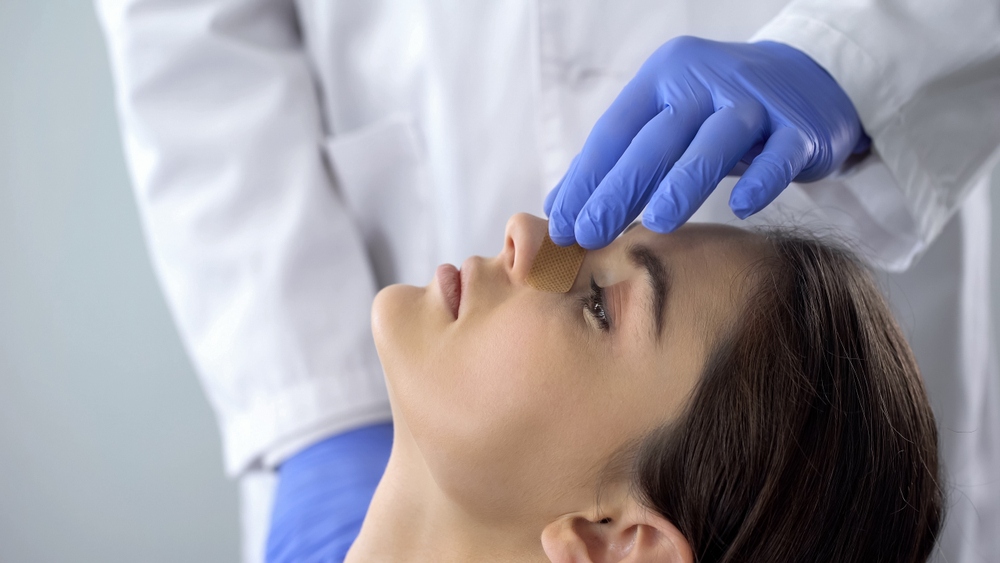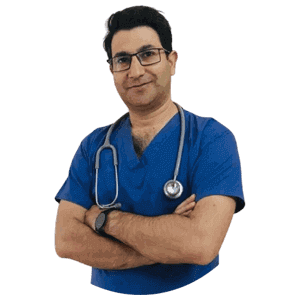One of the most popular cosmetic procedures nowadays is rhinoplasty, usually known as a “nose job” or “nose reshaping.” Your nose serves as the main focal point of your face and aids in defining the midline to provide exquisite symmetry.
Some people have perfect noses from birth, while others have flawed noses all their lives. Some people turn to surgical procedures to alter their facial features to enhance their appearance and self-confidence. A nose job modifies the nose’s appearance or rectifies a septum not aligned properly. The surgeon will operate on the soft tissue and cartilage in your nose. It is a short procedure that might alter your course of events.
Rhinoplasty has evolved to have far more varied applications in addition to the procedure’s well-known cosmetic advantages, such as enhancing nasal function following a severe injury or illness or helping with breathing issues brought on by structural issues with the nose that impact sleep and the ability to exercise.
Rhinoplasty Techniques
Rhinoplasty reduction

One of the more popular types of rhinoplasty is reduction. The surgeon performs this treatment to reduce the patient’s nose size.
Augmentation rhinoplasty

Additional frequent surgery is augmentation rhinoplasty. The patient’s nose is enlarged by the doctor using bone or tissue from another area of the patient’s body.
Reconstructive rhinoplasty

Procedures to repair noses destroyed or disfigured due to an accident or a major illness, such as cancer, are referred to as reconstructive rhinoplasty.
How is rhinoplasty done?
There is no set procedure for rhinoplasty. A skilled surgeon may use a variety of surgical procedures to accomplish the desired results. Each surgery is created to match each patient’s goals and expectations while considering their particular nasal structure.
There are two primary surgical methods for rhinoplasty:

Closed Rhinoplasty:
A method in which all incisions are masked and left without any external scarring by being performed within the nose.
Open Rhinoplasty:
A method in which a little incision is made across the columella, skin, and tissue at the base of the nose, in the space between the nostrils. The surgeon can examine the internal nasal structures by lifting the skin covering the nasal bones and cartilage. After the procedure, the skin is repositioned, and the wound is stitched. The tiny cut typically heals with little to no scarring.
What Are the Risks of Rhinoplasty?
Surgery of any kind carries hazards. These include bleeding, infection, and anesthesia-related allergic reactions. Rhinoplasty risks include:
- Numbness
- Nosebleeds
- The base of the nose is scarred.
- Small blood vessels on the skin’s surface that are bursting
- Swelling
- irreversible nerve damage
- A second or third surgery is required.
What factors determine a good candidate for Rhinoplasty?
Below are some factors that determine whether a patient is a reasonable candidate for a rhinoplasty.
AGE
Although younger people can get nose surgery, cosmetic surgeons recommend waiting until they are in their late teens or early 20s (over eighteen). Additionally, it is ideal to have the treatment when the facial soft tissue and skeletal development are finished, normally by the age of 16.
Individuals Without Heart Conditions
Like with most surgeries, you must be heart disease-free to be a good candidate for this one. For instance, you won’t be eligible for this operation if you have heart problems or a history of heart attacks or strokes.
Individuals Who Don’t Smoke
If a possible candidate smokes, it is something else we consider when determining who is a good candidate for this surgery. You must be able to go 12 weeks without consuming any nicotine to be deemed a good candidate for this surgery.
You must refrain from nicotine use for the first six weeks before your surgery since nicotine raises blood pressure. It could impact how anesthesia affects your body. It is equally crucial to abstain from nicotine for six weeks after surgery.
Your body is stressed out by nicotine and all the other chemicals in cigarettes and dip, which raises your blood pressure. Smoking has several negative side effects, including that stressed-out bodies recover much more slowly.
After Care of Rhinoplasty?
It would help if you avoided the following activities for a few weeks after surgery. Your surgeon will suggest that you take precautions for a few weeks after surgery to reduce the possibility of future bleeding and edema.
- Strenuous exercises, such as jogging and aerobics, should be avoided.
- At all costs, avoid blowing your nose.
- Excessive facial expressions should be avoided, such as laughing or smiling.
- Brush your teeth lightly to avoid excessive movement of your top lip.
- Put on garments that have a front closure. Avoid dragging clothing items over your head, such as shirts or sweaters.
Recovery of the Nose Job?

You should anticipate some swelling and bruising around the eyes after surgery, which should diminish by the third day. Most people wear a nasal splint for the first week after a nose job. It might last two weeks. After the surgery, you must keep your head elevated for at least 24 hours. You and your surgeon will most likely observe some swelling in your nose. This will come to an end in the next six months. Once your nose has fully recovered, its ultimate shape will become obvious.
FAQ?
What to know before getting a nose job?
Five things to consider before having a nose job
- Request to examine before-and-after images of prior procedures.
- Ask a lot of questions to your surgeon.
- You’ll need to take off at least two weeks from work.
- Up to a year may pass before you fully realize the benefits.
- Set reasonable goals for your performance.
Is a nose job painful?
Every patient has a different tolerance for pain, although most people only experience minimal discomfort following surgery. Being “bunged up” is more disorienting to most patients. You might have to breathe through your mouth for a few days due to the swelling, making your throat and lips dry.
How long does recovery from a nose operation take?
The average recovery period lasts 7 to 10 days. But it always changes according to the individual. Some rhinoplasties involve adjusting a deviated septum to improve breathing or reducing the turbinates to improve both allergies and breathing.
Is nose surgery high-risk?
Fortunately, the risks of rhinoplasty are minimal, and complications are uncommon. Before the procedure, your doctor will thoroughly discuss the risks and advantages of the surgery with you.
How much time is spent on a nose job?
A rhinoplasty must not be upgraded like other cosmetic surgeries after a few or more years. You’ll have a decent rhinoplasty for the rest of your life, so picking the correct surgeon is crucial.
Conclusion
A nose job or other common cosmetic operation could balance the facial features. As a result, selecting a trained and skilled surgeon is crucial for rhinoplasty. Your surgeon will decide the best course of action. Open and closed are the two methods for doing this operation.


